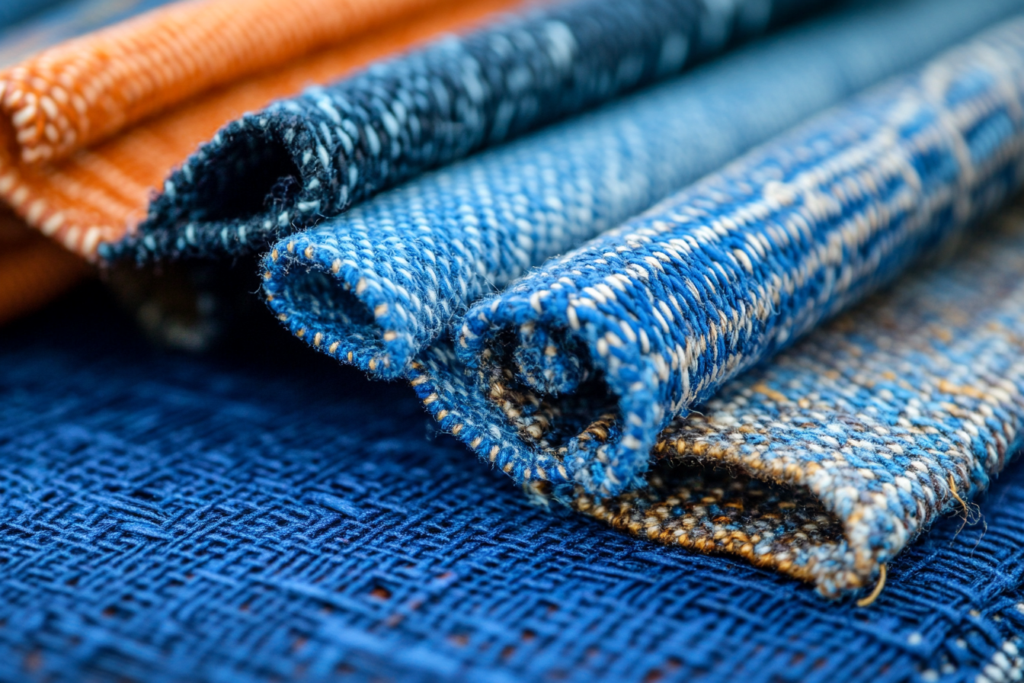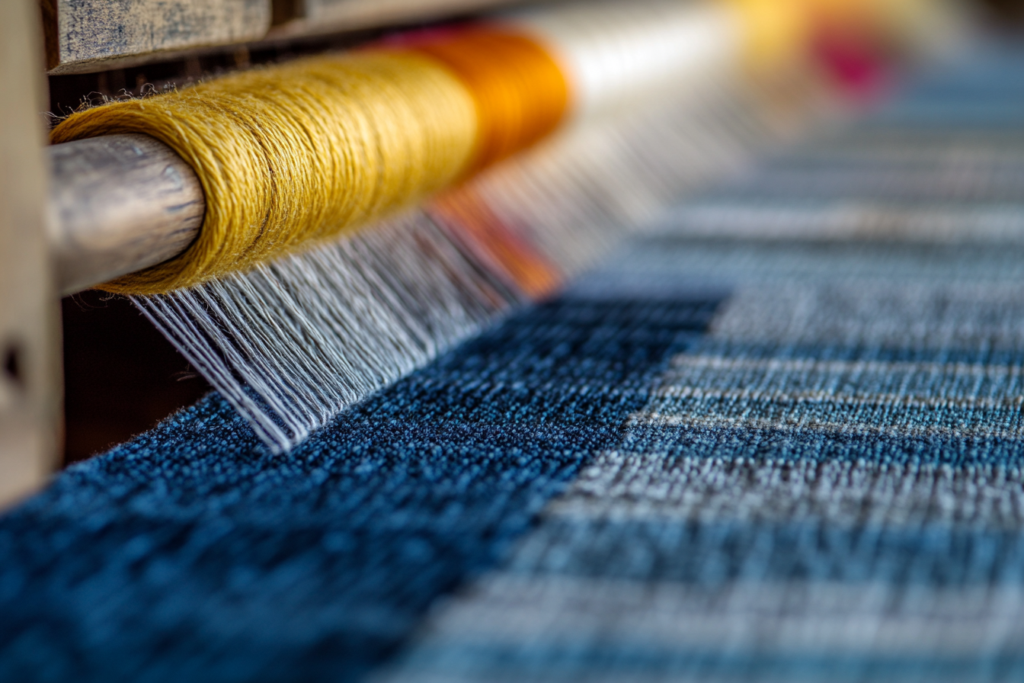Selvedge: Understanding the Fabric Edge and Its Importance in Garment Construction
Meta Description: The selvedge is the edge of a fabric that is woven to prevent fraying. Learn about its role in fabric production, how it’s created, and its significance in garment making.
What is Selvedge?
The term selvedge (or selvage) refers to the tightly woven edge of a fabric, which is created during the weaving process. This edge runs parallel to the warp yarns (the lengthwise threads) and prevents the fabric from unraveling or fraying. It is an integral part of woven fabrics and is produced by the interlacing of the warp and weft (crosswise) yarns.
The selvedge is a natural byproduct of the fabric weaving process, and its structure ensures that the fabric remains stable and intact even after being cut. Selvedges often appear on the edges of finished fabric rolls, and they are typically stronger and more tightly woven than the rest of the fabric.


Key Features of Selvedge Fabric
✔ Fray-Resistant: The woven edge prevents the fabric from fraying, offering durability and longevity.
✔ Neat Finish: Selvedge provides a clean and neat finish to the fabric edges, often eliminating the need for additional finishing techniques.
✔ Unique Design: In some fabrics, the selvedge can be decorative, featuring a different weave or pattern.
✔ Stronger Edge: Due to the dense weave of the selvedge, it is more robust than the rest of the fabric.
✔ Traditional Weaving: The presence of a selvedge is typically associated with traditional loom weaving.
Why is the Selvedge Important?
- Prevents Unraveling
The primary function of the selvedge is to prevent the fabric from fraying at the edges. This is especially important in woven fabrics where the threads can easily come undone, which would compromise the integrity and look of the fabric. - Adds Durability
Since the selvedge is woven more tightly, it provides extra strength to the fabric edge, making it less prone to wear and tear, even with repeated use and washing. - Facilitates Fabric Cutting
The selvedge is crucial when cutting fabric for garment construction. It gives the fabric stability, preventing it from shifting and maintaining consistent measurements during cutting. - Aesthetic Appeal
In some cases, the selvedge features decorative patterns, such as colored threads or a unique weave. This can add a subtle design element, especially when the selvedge is exposed, as it sometimes is in denim and high-end fabrics.
Types of Selvedge
- Plain Selvedge
This is the simplest type of selvedge, where the edges are woven using basic threads. It appears smooth and uniform along the edge of the fabric. - Decorative Selvedge
Some fabrics, such as denim or tapestries, have decorative selvedges that can include intricate patterns, colored stitching, or unique weave structures. These are often used in high-end fashion fabrics to enhance the visual appeal of the garment. - Double Selvedge
A double selvedge is commonly used in wider fabrics or when the fabric is woven with two selvedge edges, typically seen in woven textiles like canvas.
How is Selvedge Created?
The process of creating selvedge begins during the weaving process on a loom. The warp threads are threaded through the loom, and the weft threads are inserted between them in a back-and-forth motion. As the fabric is woven, the edges are reinforced by the tight interlacing of these warp and weft threads.
For traditional selvedge denim, for example, the fabric is woven on a shuttle loom, which creates a denser, cleaner edge. The shuttle moves across the loom, carrying the weft thread and weaving it through the warp threads, producing a tightly woven selvedge edge.
In modern weaving, the process may be automated, but the principle remains the same. The key difference lies in the speed and scale of production.
Where is the Selvedge Used in Garment Construction?
📌 Jeans and Denim
The most famous use of selvedge is in denim jeans, where the raw selvedge edge is often left exposed on the inside of the leg or cuff. Selvedge denim is prized for its durability and clean finish.
📌 Shirts and Blouses
Many dress shirts and blouses use fabric with a selvedge to create neatly finished hems and cuffs. The selvedge may be hidden or left visible for aesthetic purposes.
📌 Outerwear and Jackets
High-quality jackets or coats often feature fabrics with a selvedge, especially in tweeds or woolen fabrics, where the sturdy edge adds to the garment’s durability.
📌 Home Textiles
Fabrics for curtains, cushions, and bedding can also feature selvedge edges, providing a clean and finished look to home decor items.
How to Identify a Selvedge Edge
✔ Tight Weaving: The edge of the fabric will have a much tighter, more durable weave compared to the rest of the fabric.
✔ Distinctive Pattern: In certain fabrics, the selvedge might have a colored thread or a unique design woven into it. This is particularly evident in denim.
✔ Smooth, Clean Finish: The selvedge edge will be smooth and unruffled, with no fraying or loose threads.
Conclusion: The Value of Selvedge in Fabric and Fashion
Selvedge is a fundamental aspect of woven fabrics, providing strength, structure, and an aesthetically clean finish. Whether in high-end denim, dress shirts, or home textiles, the selvedge edge plays a vital role in garment durability and overall finish. In some cases, it even serves as a design element, adding character to the fabric.
For fashion designers and home sewists, understanding the importance of selvedge can significantly improve the quality of the finished product. It’s more than just a functional element—it’s a signature of craftsmanship and attention to detail in fabric construction.



